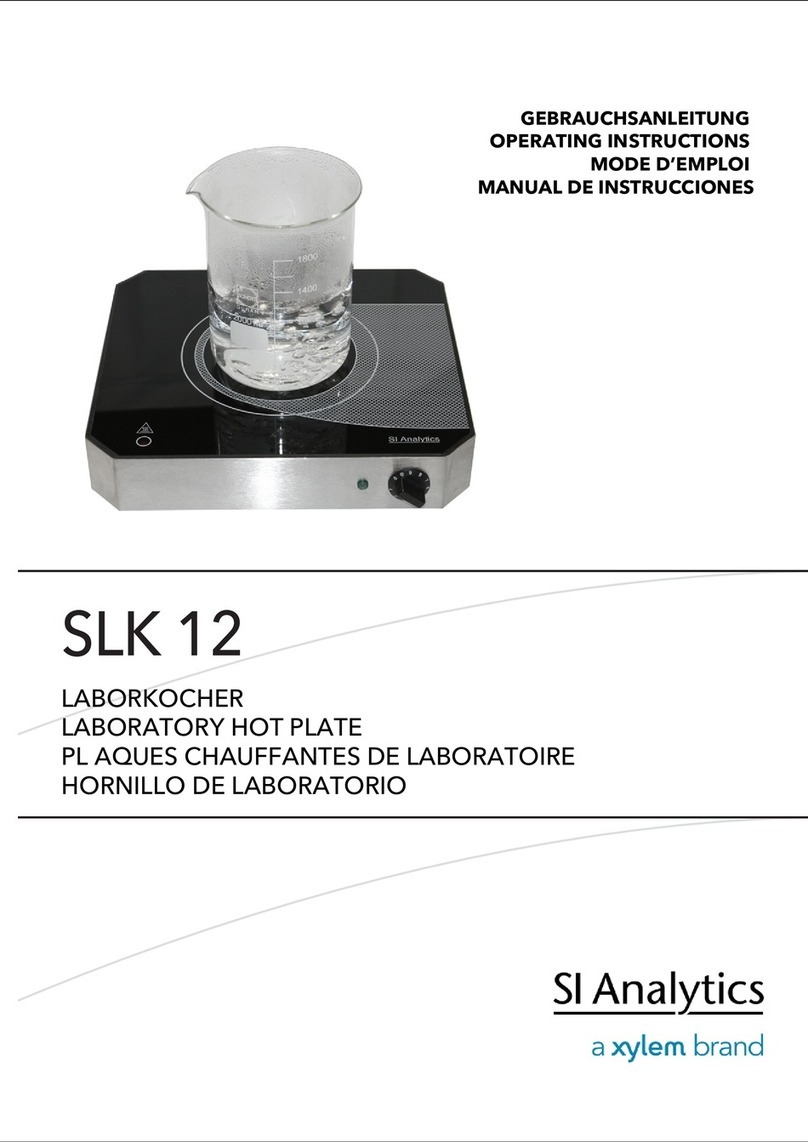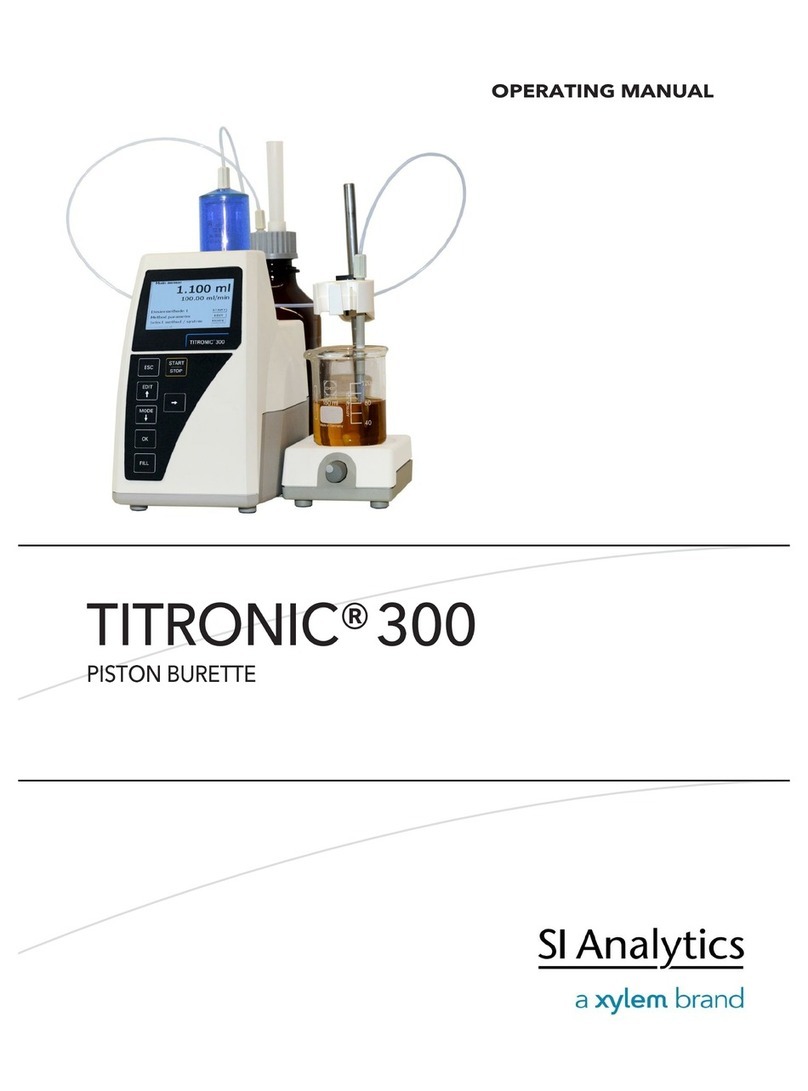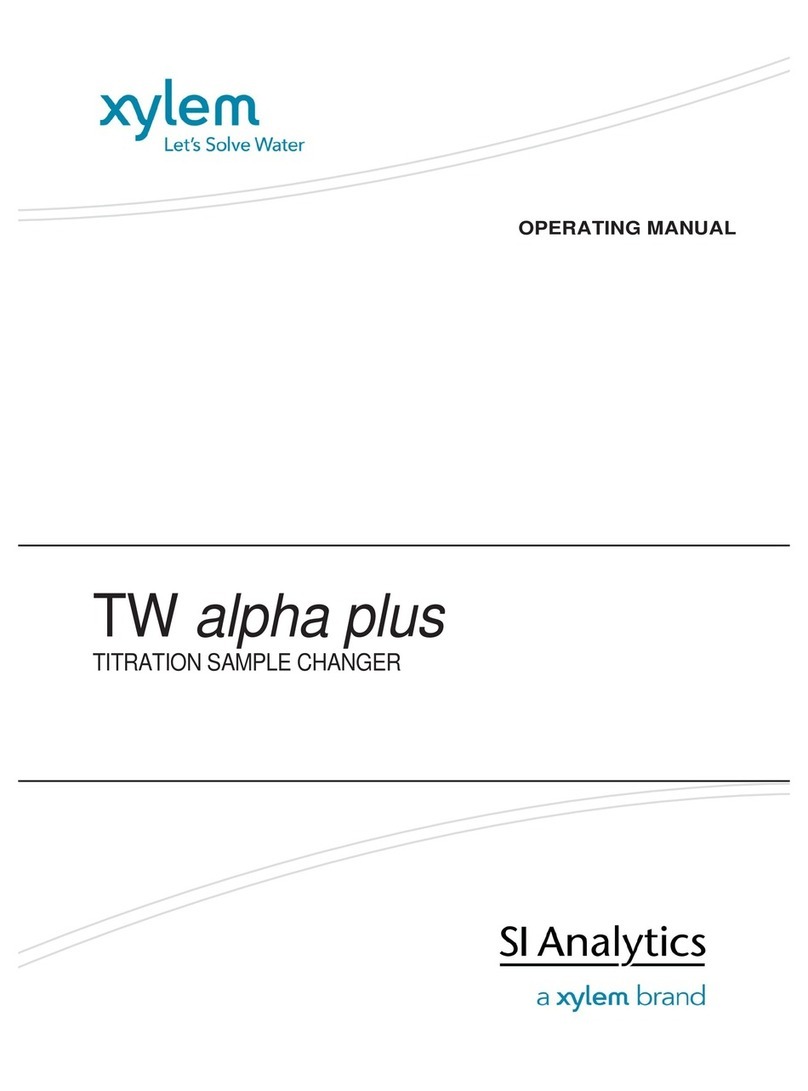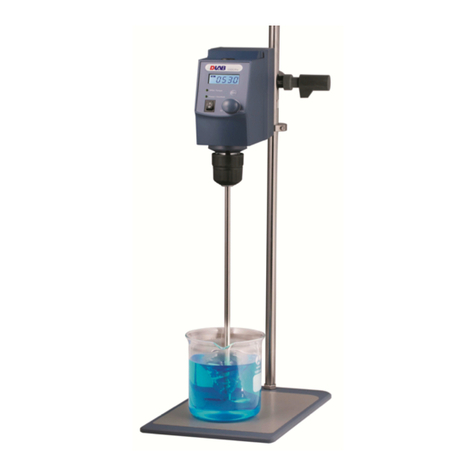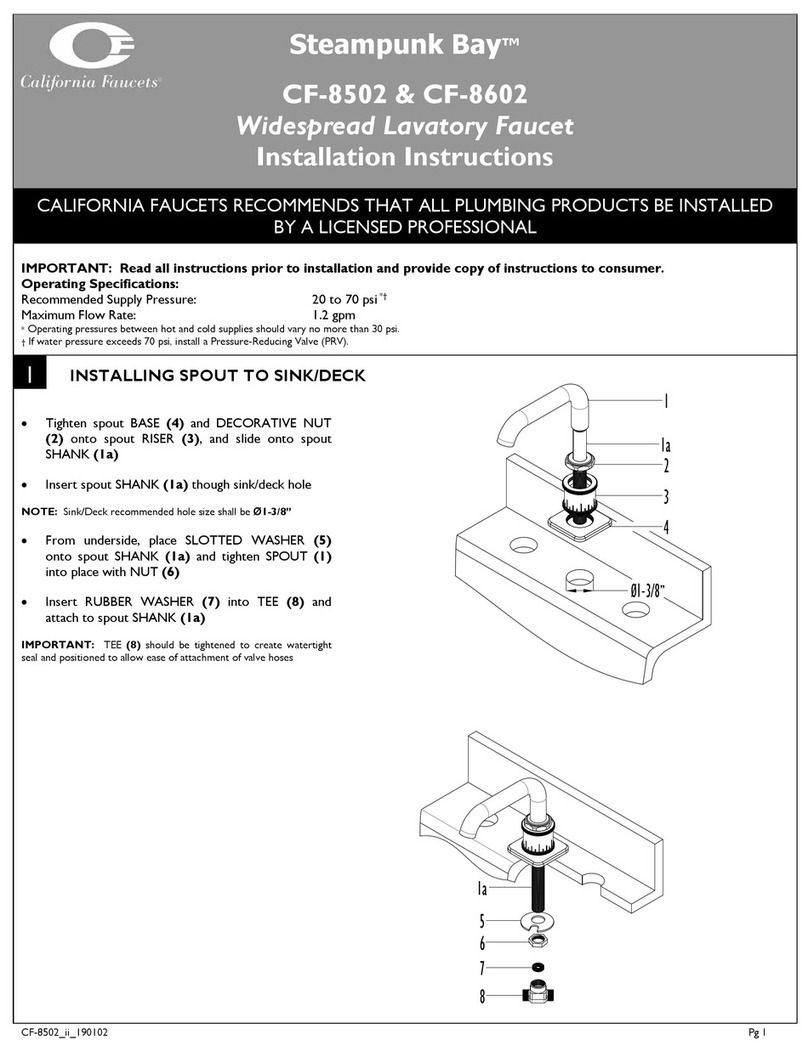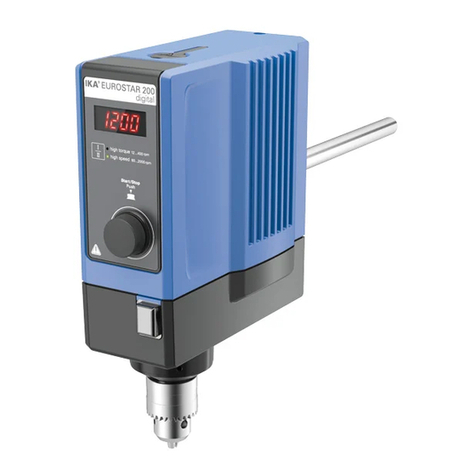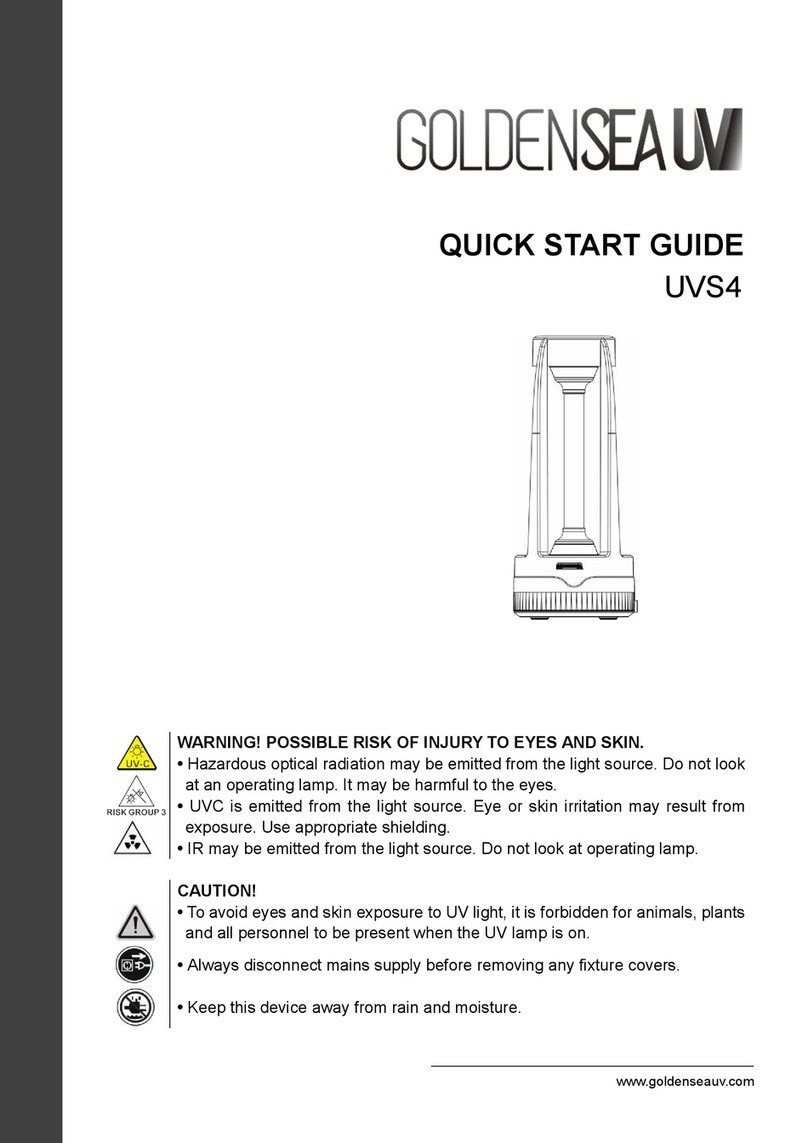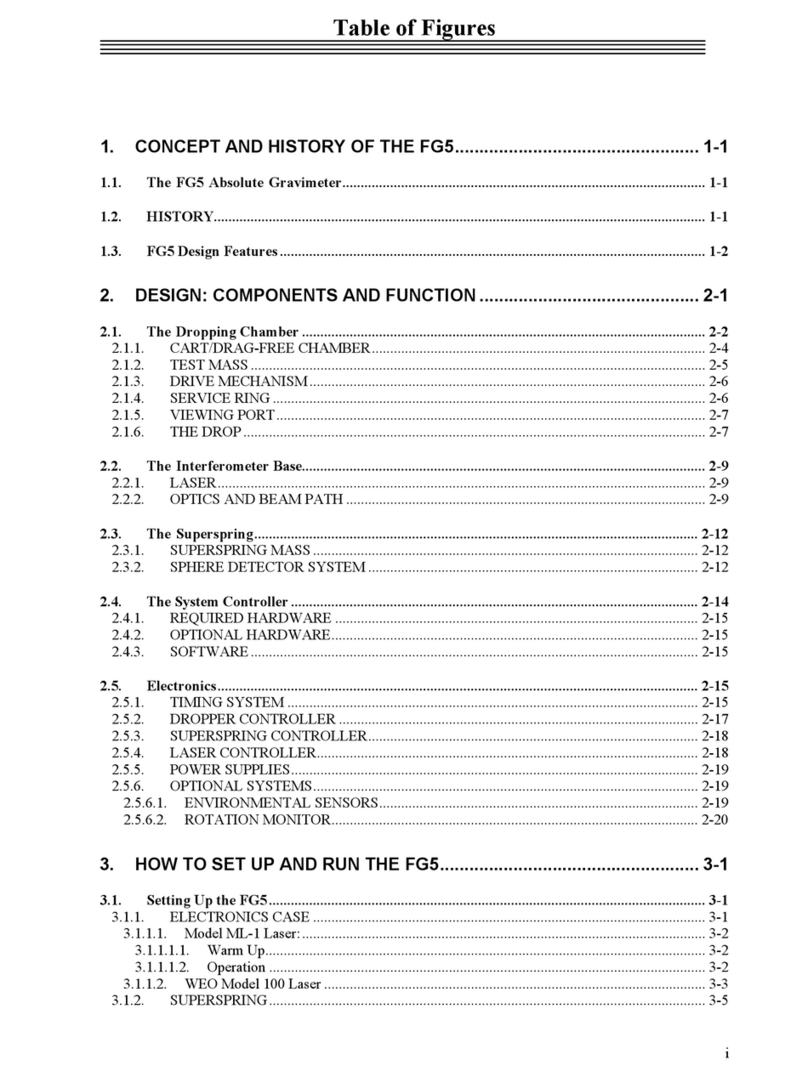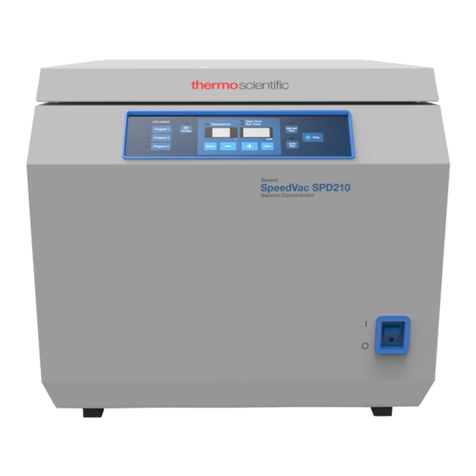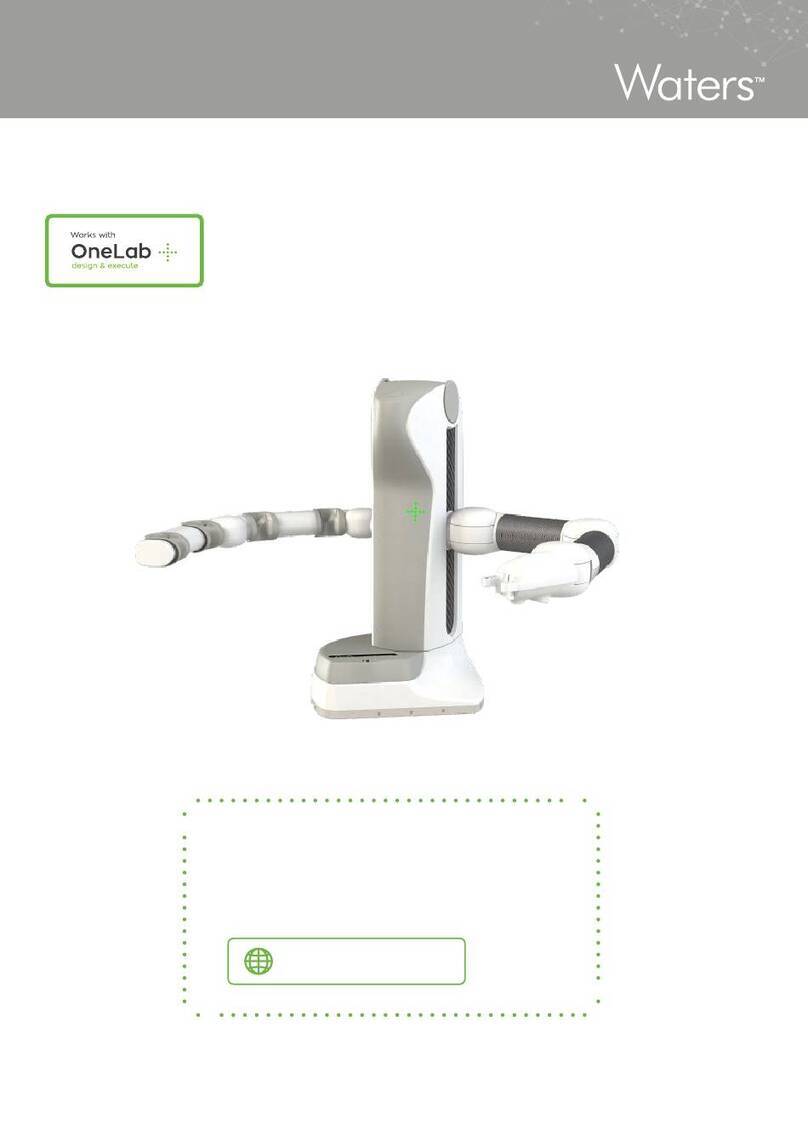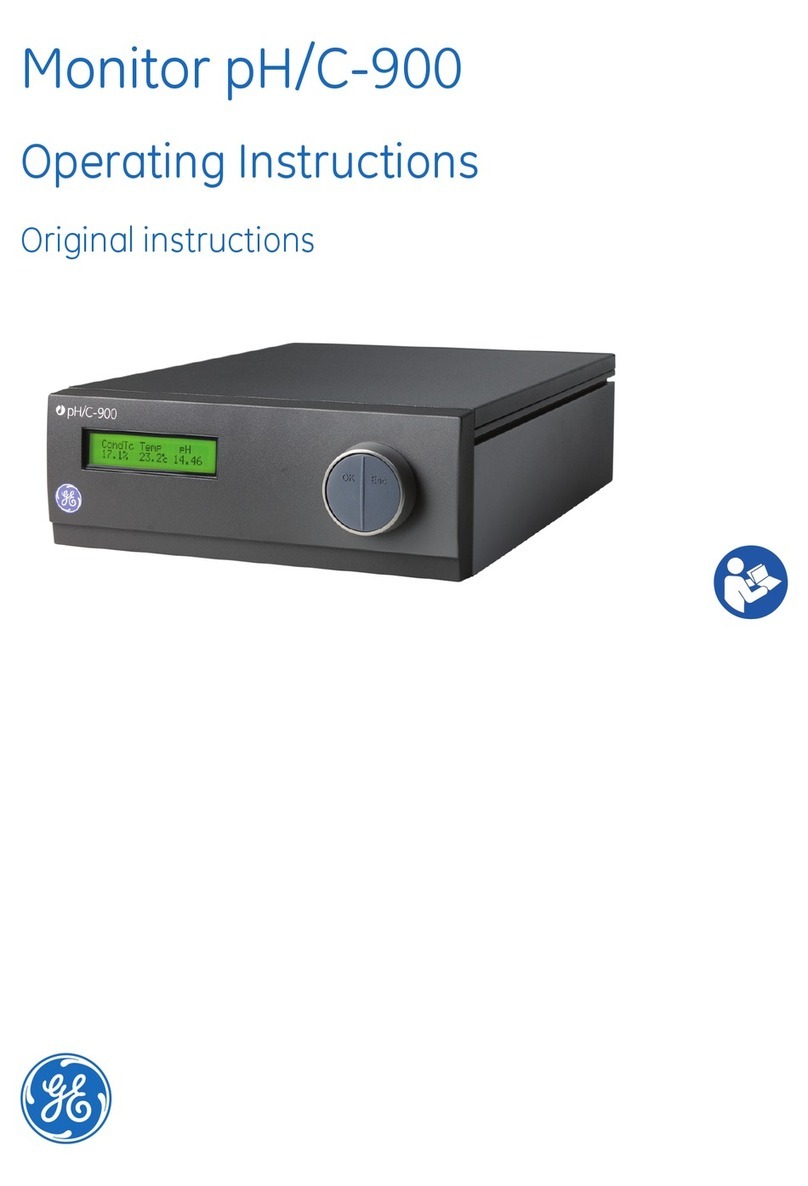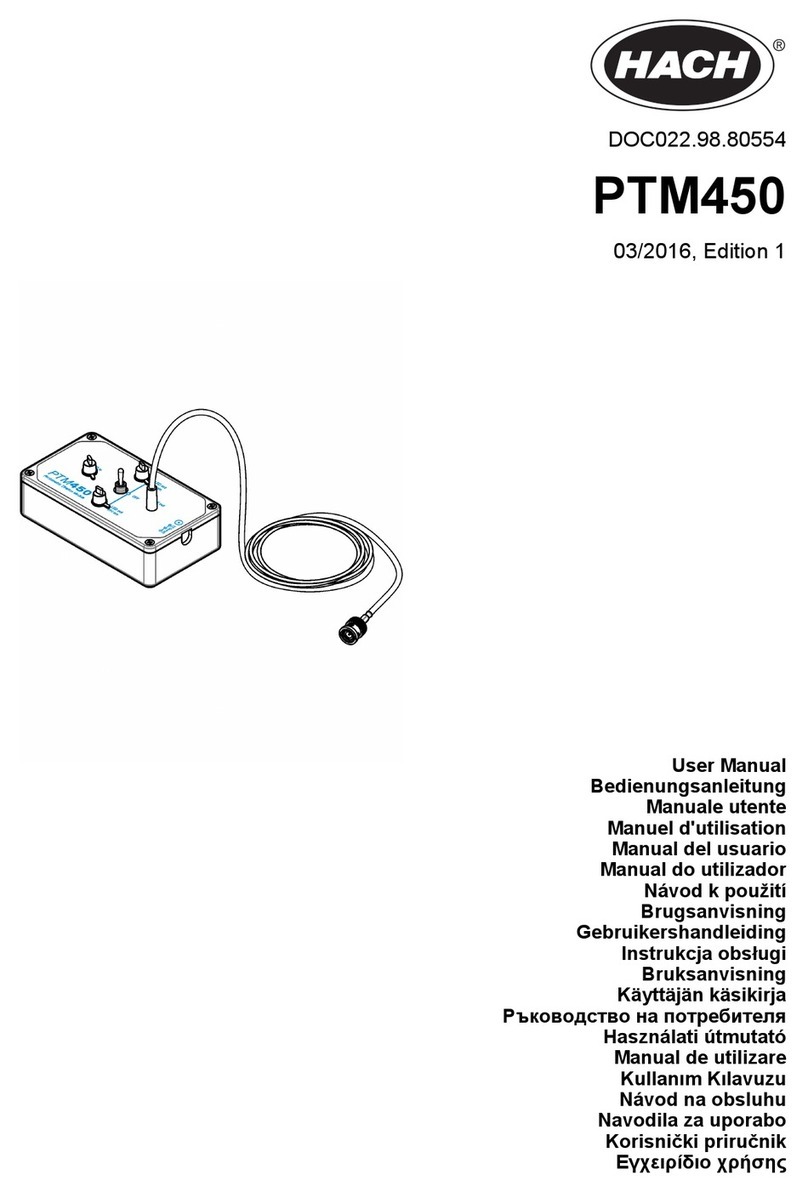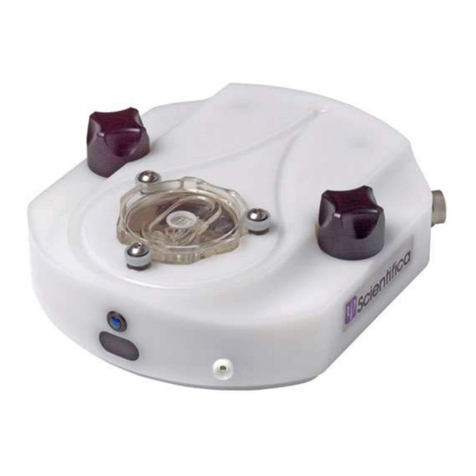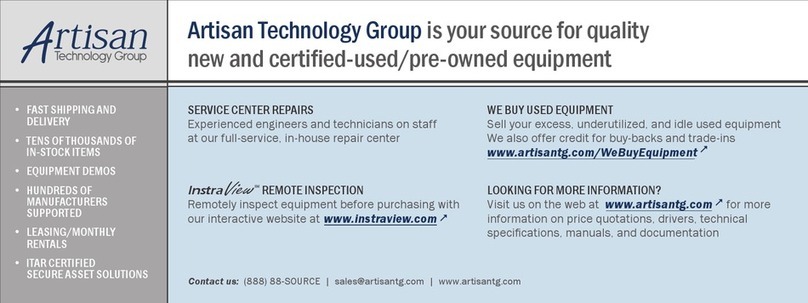SI Analytics TitroLine 7500 KF User manual

TitroLine®
7500 KF
TITRATOR
OPERATING INSTRUCTIONS

Gebrauchsanleitung ...................................................................................................... Seite 5 ..... 72
Wichtige Hinweise: Die Gebrauchsanleitung vor der ersten Inbetriebnahme des Titrators TitroLine®7500 KF
bitte sorgfältig lesen und beachten. Aus Sicherheitsgründen darf der Titrator TitroLine®7500 KF ausschließlich
nur für die in dieser Gebrauchsanleitung beschriebenen Zwecke eingesetzt werden.
Bitte beachten Sie auch die Gebrauchsanleitungen für die anzuschließenden Geräte.
Alle in dieser Gebrauchsanleitung enthaltenen Angaben sind zum Zeitpunkt der Drucklegung gültige Daten. Es
können jedoch von SI Analytics sowohl aus technischen und kaufmännischen Gründen, als auch aus der
Notwendigkeit heraus, gesetzliche Bestimmungen der verschiedenen Länder zu berücksichtigen,
Ergänzungen am Titrator TitroLine®7500 KF vorgenommen werden, ohne dass die beschriebenen
Eigenschaften beeinflusst werden.
Operating Instructions ................................................................................................ Page 73.... 142
Important notes: Before initial operation of the Titration Unit TitroLine®7500 KF, please read and observe
carefully the operating instructions. For safety reasons the Titration Unit TitroLine®7500 KF may only be used
for the purposes described in these present operating instructions.
Please also observe the operating instructions for the units to be connected.
All specifications in this instruction manual are guidance values which are valid at the time of printing.
However, for technical or commercial reasons or in the necessity to comply with the statuary stipulations of
various countries, SI Analytics may perform additions to the Titration Unit TitroLine®7500 KF without changing
the described properties.


TABLE OF CONTENT PAGE
1. Technical Specifications of the Titrator TitroLine®7500 KF................................ 75
1.1 Summary............................................................................................................................75
1.2 Specifications Titrator TitroLine®7500 KF............................................................................76
1.3 Warning and safety information...........................................................................................79
2. Unpacking and First Operation .............................................................................. 80
2.1 Unpacking...........................................................................................................................80
2.2 Installation and Connection of the TM 235 KF titration stand and titration vessel..................80
2.3 Connecting the Titrator - Combination with Accessories and Additional Devices..................84
2.3.1 Back panel of the titrator TitroLine® 7500 KF ......................................................................84
2.3.2 Connection ports of the TitroLine® 7500 KF........................................................................84
2.3.3 Connecting a printer............................................................................................................84
2.3.4 Connecting a USB device (manual controller, keyboard, memory device, hub)....................84
2.3.5 Connection of analytical balances .......................................................................................85
2.4 Setting the Language of the Country ...................................................................................85
2.5 Interchangeable unit WA.....................................................................................................86
2.5.1 Installing the interchangeable unit.......................................................................................86
2.6 Positioning and Replacing an Interchangeable Unit.............................................................87
2.6.1 Placing an interchangeable unit...........................................................................................87
2.6.2 Removing an interchangeable unit ......................................................................................88
2.6.3 Programming the titration unit..............................................................................................88
2.7 Initial Filling or Rinsing of the Entire Interchangeable Unit....................................................90
2.8 Filling the titration vessel with solvent..................................................................................92
2.9 Replacing the Glass Cylinder and the PTFE Piston .............................................................92
3. Working with the Titrator TitroLine®7500 KF........................................................ 95
3.1 Front Keyboard...................................................................................................................95
3.2 Display................................................................................................................................95
3.3 Manual controller “mouse“...................................................................................................96
3.4 External PC Keyboard.........................................................................................................96
3.5 Menu Structure ...................................................................................................................97
3.6 Main Menu..........................................................................................................................99
3.6.1 Standard methods of KF Titration........................................................................................99
3.6.2 Automatic KF Titration.......................................................................................................100
3.6.3 Dosage.............................................................................................................................104
3.6.4 Preparing Solutions...........................................................................................................107
4. Method Parameters................................................................................................ 108
4.1 Method editing and new method........................................................................................108
4.2 Default methods................................................................................................................108
4.3 Copy Methods...................................................................................................................109
4.4 Delete Methods.................................................................................................................109
4.5 Print method .....................................................................................................................110
4.6 Change Method Parameters..............................................................................................110
4.6.1 Method type......................................................................................................................110
4.6.2 Result ...............................................................................................................................111
4.6.3 Titration parameters..........................................................................................................119
4.6.4 Titration end......................................................................................................................122
4.6.5 Dosing parameter..............................................................................................................124
4.6.6 Sample identification.........................................................................................................125
4.6.7 Documentation..................................................................................................................126
5. System settings ..................................................................................................... 127
5.1 Interchangeable Unit - Reagents.......................................................................................127
5.2 RS232 Settings.................................................................................................................129
5.3 Date and Time ..................................................................................................................131
5.4 Password..........................................................................................................................131

5.5 RESET..............................................................................................................................131
5.6 Printer...............................................................................................................................132
5.7 Device Information............................................................................................................132
5.8 System Tone.....................................................................................................................132
5.9 Software Update ...............................................................................................................133
6. Data Communication via RS232- and USB-B interface ...................................... 135
6.1 General Information ..........................................................................................................135
Meaning / Description........................................................................................................................135
6.2 Chaining multiple devices —“Daisy Chain Concept“ ..........................................................135
6.3 Instruction Set for RS-Communication...............................................................................135
7. Connection of Analytical Balances and Printers ................................................ 137
7.1 Connection of Analytical Balances.....................................................................................137
7.1.1 Balance TZ-Number..........................................................................................................137
7.2 Balance data editor...........................................................................................................138
7.3 Connection of Printers.......................................................................................................139
8. Maintenance and Care of the TitroLine®7500 KF ............................................... 140
9. Storage and transportation................................................................................... 141
10Recycling and Disposal......................................................................................... 141
11Index ....................................................................................................................... 142
Version 120829 US

75
Chapter 1 – Specifications Titrator TitroLine®7500 KF
1 Technical Specifications of the Titrator TitroLine®7500 KF
1.1 Summary
The TitroLine®7500 KF is suitable for the following applications:
The possible range of titrations includes volumetric KF and Dead stop titrations with a maximum of 50
memorisable methods.
The examples of possible use of the TitroLine®7500 KF include:
−KF titrations with 1-component KF reagents
−KF titrations with 2-component KF reagents
−Dead stop titrations such a bromine number and sulphur dioxide in
−Compatible with TitriSoft 3.0.
In addition, the TitroLine®7500 KF comes with following functionalities of the TITRONIC®500 piston burette:
−Dosing
−Preparation of solutions
Each method allows for the setting of a variety of dosing and filling rates.
Solutions to be used:
Virtually, any liquids and solutions with a viscosity of < = 10 mm² / s such as concentrated sulphuric acid may
be used. However, one has to avoid the use of chemicals that may attack glass, PTFE or FEP or that are
explosive, such as hydrofluoric acid, sodium azide or bromine! Suspensions containing high solids
percentages may clog or even damage the dosing system.
General provisions:
The safety guidelines that are applicable to the handling of chemicals have to be observed under all
circumstances. This applies in particular to inflammable and/or etching liquids.
Guarantee
We provide guarantee for the device described for two years from the date of purchase. This
guarantee covers manufacturing faults being discovered within the mentioned period of two years.
Claim under guarantee covers only the restoration of functionality, not any further claim for damages
or financial loss.
Improper handling/use or illegitimate opening of the device results in loss of the guarantee rights.
The guarantee does not cover wear parts, as lobes, cylinders, valves and pipes including the thread
connections and the titration tips. The breach of glass parts is also excluded. To ascertain the
guarantee liability, please return the instrument and proof of purchase together with the date of
purchase freight paid or prepaid.

76
Chapter 1 – Specifications Titrator TitroLine®7500 KF
1.2 Specifications Titrator TitroLine®7500 KF
Status July. 01th2012
CE sign:
EMC compatibility according to the Council Directive: 2004/108/EG;
applied harmonized standards: EN 61326-1:2006
Low-voltage directive according to the Council Directive 2006/95/EG
Testing basis EN 61 010, Part 1
Country of origin: Germany, Made in Germany
The following solvents/titration reagents are allowed to be used:
−All common titration solutions.
−As reagent water and all non-aggressive non-organic and organic fluids are allowed. If using combustible
fluids fire please adhere to the Guidelines for Explosion Protection and Prevention of the chemical industry.
−For fluids with higher viscosity (≥5 mm2/s), lower boiling point or affinity to outgas, the filling and dosage
speed can be adjusted.
−Fluids with viscosity over 20mm2/s cannot be dosed.
Measurement input: Karl-Fischer (Dead-stop) connector for double platinum electrode
Polarisation voltage variably adjustable from 40 … 220 mV.
Connector: 2 x 4 mm - sockets.
Measurement
range
Display resolution
Measurement
accuracy* withou
t
sensor probe
I [µA]
0 ... 100
0,1
0,2 ±1 Digit
* The measurement uncertainty of the sensor probe has to be taken into account as well.

77
Chapter 1 – Specifications Titrator TitroLine®7500 KF
Display: 3.5 inches -1/4 VGA TFT display with 320x240 pixels.
Inputs:Measurement input µA: (Dead-Stop-) connector for double platinum electrode
Connection sockets: 2 x 4 mm)
Power supply: power supply 90-240 V; 50/60 Hz, power input: 30 VA
RS232-C Interface:RS232-C interface separated galvanically through photocoupler
Daisy Chain function available.
Data bits: adjustable, 7 or 8Bit (default: 8 Bit)
Stop bit: adjustable, 1or 2 Bit (default: 1 Bit)
Start bit: static 1Bit
Parity: adjustable: even / odd / none
Baud rate: adjustable: 1200, 2400, 4800, 9600, 19200 (Default 4800 baud)
Address: adjustable, (0 to 15, default: 01)
RS232-1 for computer, input Daisy Chain
RS232-2 devices of SI Analytics, titrator TitroLine6000/7000/7500,
- Burettes TITRONIC500, TITRONIC110 plus, TITRONICuniversal,
- Balances of the types Mettler, Sartorius,
- Kern, Ohaus (for more, please contact SI Analytics)
- Exit Daisy Chain
USB Interface: 2 x USB-type A and 1 x USB-type B
USB –Typ B (“slave“) for connecting a PC
USB –Typ A (“master“) for connecting:
- USB keyboard
- USB printer
- USB “mouse“ (“mouse“),
- USB data media e.g. USB stick
- USB Hub
Stirrer/pump TMKF: 12V DC out,500mA
power supply for stirrer TM 235 and KF titration stand TM 235 KF
Housing material: Polypropylene
Front keyboard: polyester coated
Housing dimensions: 15.3 x 45 x 29.6 cm (W x H x D), height incl. interchangeable unit
Weight: ca. 2.3 kg for basic unit
ca. 3.5 kg for complete device incl. interchangeable unit (with empty reagent bottle)
Ambient conditions: Ambient temperature: + 10 ... + 40 °C for operation and storage
Humidity according to EN 61 010, Part 1:
Max. relative humidity 80 % for temperatures up to 31 °C,
linear decrease down to 50 % relative humidity at a temperature of 40 °

78
Chapter 1 – Specifications Titrator TitroLine®7500 KF
Status Aug. 23rd 2011
Interchangeable units
Compatibility: units are compatible to the titrators TitroLine®6000, TitroLine®7000, TitroLine®
7500 KF and Piston Burette TITRONIC®500
Recognition: automatically through RFID. Recognition of unit size and characteristics of the
Titration- or dosing solution
Valve: volume neutral cone valve made from fluorocarbon polymers (PTFE), TZ 3000
Cylinder: borosilicate glass 3.3 (DURAN®)
Hoses: FEP hose set, blue
Bracket for supply bottle: suitable for square glass bottle and misc. reagent bottles
Materials: borosilicate glass DURAN®, fluorocarbon polymers (PTFE), stainless steel,
polypropylene,
Dimensions: 15 x 34 x 22.8 cm (W x H x D) incl. reagent bottle
Weight: approx. 1.2 kg for interchangeable unit WA incl. empty reagent bottle
Dosing accuracy: after DIN EN ISO 8655, part 3
Accuracy: 0.15 %
Precision: 0.05 - 0.07 %
(Depending on the used interchangeable unit)
Dosing accuracy of the Titrator TitroLine®7500 KF with WA interchangeable units:
Interchangeable.
unit
type No.
Volume
[ml]
Tolerances of the Øi
of the glass cylinder
[mm]
Dosage error*
according to
100 % volume
[%]
Reproducibility
[%]
WA 05 5.00 ± 0.005 ± 0.15 0.07
WA 10 10.00 ± 0.005 ± 0.15 0.05
WA 20 20.00 ± 0.005 ± 0.15 0.05
WA 50 50.00 ± 0.005 ± 0.15 0.05

79
Chapter 1 – Specifications Titrator TitroLine®7500 KF
1.3 Warning and safety information
The TitroLine®7500 KF corresponds to protection class II. It was manufactured and tested according to DIN
EN 61 010, Part 1, Protective Measures for Electronic Measurement Devices and has left the factory in an
impeccable condition as concerns safety technology. In order to maintain this condition and to ensure safe
operation, the user should observe the notes and warning information contained in the present operating
instructions. Development and production is done within a system which meets the requirements laid down in
the DIN EN ISO 9001 standard.
For reasons of safety, the titrator TitroLine®7500 KF must be opened by authorised persons only; this means,
for instance, that work on electrical equipment must only be performed by qualified specialists.
!
In the case of nonobservance of these provisions the titrator TitroLine®7500 KFmay constitute a
danger: electrical accidents of persons or fire hazard. Moreover, in the case of unauthorised
intervention in the titrator TitroLine®7500 KF as well as in the case of negligently or deliberately
caused damage, the warranty will become void.
!
Prior to switching the device on it has to be ensured that the operating voltage of the titrator TitroLine® 7500
KF matches the mains voltage. The operating voltage is indicated on the specification plate. Nonobservance of
this provision may result in damage to the titrator TitroLine® 7500 KF or in personal injury or damage to
property.
If it has to be assumed that safe operation is impossible, the titrator TitroLine®7500 KF has to be put out of
operation and secured against inadvertent putting to operation. In this case please switch the titrator TitroLine®
7500 KF off, pull plug of the mains cable out of the mains socket, and remove the titrator TitroLine®7500 KF
from the place of work.
Examples for the assumption that a safe operation is no longer possible,
the package is damaged,
the titrator TitroLine®7500 KF shows visible damages,
titrator TitroLine®7500 KF does not function properly,
liquid has penetrated into the casing.
The titrator TitroLine®7500 KF must not be stored or operated in humid rooms.
For reasons of safety, the titrator TitroLine®7500 KF must only be used for the range of application described
in the present operating instructions.
In the case of deviations from the intended proper use of the device, it is up to the user to evaluate the
occurring risks.
!
The relevant regulations regarding the handling of the substances used have to be observed: The
Decree on Hazardous Matters, the Chemicals Act, and the rules and information of the chemicals trade. It
has to be ensured on the side of the user that the persons entrusted with the use of the titrator TitroLine®
7500 KF are experts in the handling of substances used in the environment and in titrator TitroLine®7500 KF
or that they are supervised by specialised persons, respectively.
During all work with titration solutions:
!
Please wear protective glasses!
!
The titrator TitroLine®7500 KF is equipped with integrated circuits (EPROMs). X rays or other high energy
radiation may penetrate through the device’s casing and delete the program.
For working with liquids, not beeing common titration solvents, especially the chemical resistance of the
construction materials of the titrator TitroLine®7500 KF have to be considered (please also refer to chapter
1.1).
For the use of liquids with high vapour pressure or (mixture of) substances not being mentioned in chapter 1.1
as allowed substances, the safe and proper operation of the titrator TitroLine®7500 KF has to be guaranteed
by the user.
When the piston moves upwards within the cylinder, a microfilm of dosing liquid or titration solution will always
remain adhered to the inner wall of the cylinder, but this has no influence on the dosing accuracy. This small
residue of liquid, however, may evaporate and thus penetrate into the zone underneath the piston, and if non-
admitted liquids are being used, the materials of the titrator TitroLine®7500 KF may be dissolved or corroded
(please refer also to chapter 8 “Maintenance and Care of the titrator TitroLine®7500 KF”).

80 Chapter 2. Unpacking and First Operation
2 Unpacking and First Operation
2.1 Unpacking
The titrator itself as well as all related accessory and peripheral parts have been carefully checked at the factory
to ensure their correct function and size. The TitroLine®7500 KF modules consists of:
•TitroLine®7500 basic unit
•An interchangeable dosing unit WA 05, WA 10 or WA 20
•The KF titration stand (pump and stirrer) TM 235 KF including waste (1 L clear bottle), solvent (1 L amber
bottle) and moisture bottle (100 ml) with all tubes.
•Titration vessel TZ 1770 including titration tip
•KF starter kit TZ 1789 with molecular sieve, glass wool and a set of syringes with needles.
•Electrode KF 1100
Please ensure that the small accessories are also removed in full from the packaging. For the scope of delivery,
please refer to the enclosed parts lists.
Fig. 1
2.2 Installation and Connection of the TM 235 KF titration stand and titration vessel
The titrator TitroLine®7500 KF and the TM 235 KF may be placed on any flat surface.
As a rule, the TM 235 KF titration stand is arranged to the right of the titrator.
The pump/stirrer is connected to the 12V out-socket at the rear panel of the TitroLine®7500 KF using the TZ
1577 connection cable (scope of delivery of the basic device) (cp. ‘Back panel’ illustration, chapter 2.4).
The stand rod (scope of delivery of the basic device) is screwed into the thread of the TM 235 KF.
The titration vessel TZ 1770 is mounted at the stand rod. Please take care that the metal clamp is adjusted as
shown in the attached photo:

81
Chapter 2. Unpacking and First Operation
Fig. 2
Put all three white inner plastic adapters at the waste, solvent and moisture bottle.
Fill the moisture bottle with molecular sieve.
Connect the PVC and PTFE plastic tubes as shown in the next pictures.
The PVC tubes are connected to the connectors at the back side of the TM 235 KF. The long PVC tube is used
for the connection of the waste bottle. The two shorter PVC ones are used to connect the moisture bottle and the
solvent bottle.
Fig. 3

82 Chapter 2. Unpacking and First Operation
The moisture bottle is connected to the right connector (view from above) of the TM 235 KF. The waste (clear)
bottle is connected to the left connector.
Fig. 4
The PTFE tube from the clear waste bottle is adjusted to the ground (tube 1) of the titration vessel. The PTFE
tube from the solvent bottle (tube 2) is adjusted as shown in the next two pictures:
Fig. 5

83
Chapter 2. Unpacking and First Operation
Fig. 6
The burette tip is placed into the left NS 14 opening and connected to the valve of the interchangeable unit.
Put first some glass wool and then molecular sieve in the plastic moisture tube. Place it to the other NS opening
as shown in the next picture.
Fig. 7
The electrode KF 1100 is connected to the µA input.
The keyboard is connected to one of the USB –A ports.

84 Chapter 2. Unpacking and First Operation
2.3 Connecting the Titrator - Combination with Accessories and Additional Devices
2.3.1 Back panel of the titrator TitroLine®7500 KF
Fig. 8
2.3.2 Connection ports of the TitroLine®7500 KF
The TitroLine® 7500 KF is equipped with the following connections:
1) µA measurement input for the connection of double platinum electrodes (KF 1100 or Pt 1200, Pt 1400)
2) USB-B interface for connection to a PC
3) On/Off switch
4) Two USB-A (“Master“) interfaces for connecting USB devices such as a keyboard, printer, manual control
unit, USB memory device etc.
5) ”in“: Connection of the external power pack
6) “out“: Connection of the TM 235 KF titration stand or TM 235 magnetic stirrer
7) Two RS232 ports, 4-channel (Mini-DIN):
RS1 for connection to the PC
RS2 for connection of a weighing balance and other devices from SI Analytics (burettes a.s.o.)
2.3.3 Connecting a printer
Printers with a USB interface are to be connected to one of the two USB-A interfaces. These printers have to
feature HP PCL emulation (3, 3GUI, 3 enhanced, 5, 5e). So-called GDI printers cannot be used!
Alternatively the thermo-compact printer Seiko S445 can be connected.
2.3.4 Connecting a USB device (manual controller, keyboard, memory device, hub)
The following USB devices can be connected to the USB-A interfaces:
•PC-keyboard
•TZ 3880 manual controller (in the following: ”mouse“)
•Printer
•USB storage devices, e.g. USB sticks
•USB hub
•USB barcode scanners
1
2
3
4
5
6
7

85
Chapter 2. Unpacking and First Operation
2.3.5 Connection of analytical balances
Analytical balances are to be connected to the RS232-2 using an appropriate cable
2.4 Setting the Language of the Country
The ex-factory default language setting is English. When the piston burette is switched on, the main menu will
appear once the boot sequence is completed:
Fig. 8
Using <SYS/<F7> or <MODE>, followed by <System settings> you navigate to the system settings. The very first
menu is to be used for setting the language of the country:
Fig. 9
Use <ENTER>/<OK> to call the menu. Select the national language using the <↑↓> arrow keys, confirm it with
<ENTER>/<OK>:
Fig. 10
The selected language will appear immediately. Pressing the <ESC> key twice will return the user to the main
menu.

86 Chapter 2. Unpacking and First Operation
2.5 Interchangeable unit WA
Fig. 11
1) TZ 3871 - suction hose
2) TZ 3872 - connection hose
3) TZ 3873 - dosing hose without dosing tip and holding bracket;
TZ 3874 - dosing hose with dosing tip and holding bracket
4) TZ 3801 - valve cover lid
5) TZ 3000 - 3/2-way valve
6) TZ 2003 - drying tube
7) TZ 3802 - threaded cap with borehole GL 45, incl. adapter with 2 openings for drying tube and suction
hose
8) TZ 3803 - 1 litre reagent bottle, brown
9) TZ 3900 - UV protection, blue transparent
10) TZ 3875 - shaft for titration tip and
TZ 3356 - titration tip unit, blue or micro titration tip white TZ 3285, adapter TZ 1525
11) TZ 1507 - plastic drip-down tubule
2.5.1 Installing the interchangeable unit
Fig. 11 shows a completely assembled interchangeable unit.
•Remove the valve with the attached hoses from the pack, and then push it on the valve support until it
snaps in position.
•Slip on the valve cover lid on the valve as is shown in the illustration.
•Insert the TZ 3872 connection hose in the threaded hole provided in the burette cylinder, and then tighten
it by hand.
•Insert the TZ 3871 suction hose into the threaded opening of the GL 45 or S 40 adapters, and then
tighten it manually.
•Remove the standard dosing hose TZ 3874 from the valve and connect the dosing hose including from
the KF titration vessel TZ 1770
6
3
1
2
4
5
7
8
9
11

87
Chapter 2. Unpacking and First Operation
2.6 Positioning and Replacing an Interchangeable Unit
The base unit comes with an RFID reader, and all the interchangeable units are equipped with an RFID
transponder. This transponder can be used to store the following information:
•Unit size (cannot be changed)
•Unit ID (cannot be changed)
•Reagent name (default: blank)
•Concentration (default: 1.000000)
•Concentration determined on: (Date)
•To be used until: (Date)
•Opened/Produced on: (Date)
•Test according to ISO 8655: (Date)
•Charge description: (default: no charge)
•Last modification: (Date)
Each time an interchangeable unit is pushed onto the base unit, the data is automatically read out of the
transponder.
2.6.1 Placing an interchangeable unit
The interchangeable unit is to be placed on the device unit as is shown in fig. 12 a-c; subsequently, it is to be
pushed downwards until the black button latches on the left side.
Fig. 12.a
Fig. 12.b

88 Chapter 2. Unpacking and First Operation
Fig. 12.c
2.6.2 Removing an interchangeable unit
Removing the interchangeable unit is done in reverse order:
•Depress the black button on the left, and then pull the interchangeable unit forward as is shown in fig. 12
c – 12 a.
!
Please note: Removing the interchangeable unit is only possible as long as the piston is in the lower
position (zero position). Possibly, it may be necessary to press the <FILL> key first.
!
2.6.3 Programming the titration unit
The data from the RFID transponder of the interchangeable unit will be read immediately (fig. 13).
Fig. 13
Following the reading operation, the input menu for the input of the reagents will be shown for approx. 10
seconds (fig. 14). The size of the interchangeable unit is displayed on the left side of the display (here 10 ml).
Fig. 14

89
Chapter 2. Unpacking and First Operation
When used for the first time, it is recommended to enter here at least the name of the reagent being used. To do
so, confirm the “Reagent“selection with <ENTER>, then type the name and possibly the concentration (fig. 12).
Fig. 15
Press <OK>/<ENTER> to confirm (fig. 15). Following the optional input of additional parameter, press <ESC> to
leave the reagents menu (fig. 16). The approximate concentration of the KF titrant (e.g. 5 or 2) should be entered
under concentration. Thereby the drift in µg/min can be calculated in the right dimensions.
Fig. 16
You will be prompted for a confirmation of the values (fig. 17):
Fig. 17
If you selected <Yes>, the values will be written into the interchangeable unit. You can see this from a message
in red colour displayed at the bottom. Upon completion, the left bottom corner of the display will show the new
name of the reagent (fig. 18). In the present case this is Titrant 5.
Table of contents
Other SI Analytics Laboratory Equipment manuals
Popular Laboratory Equipment manuals by other brands
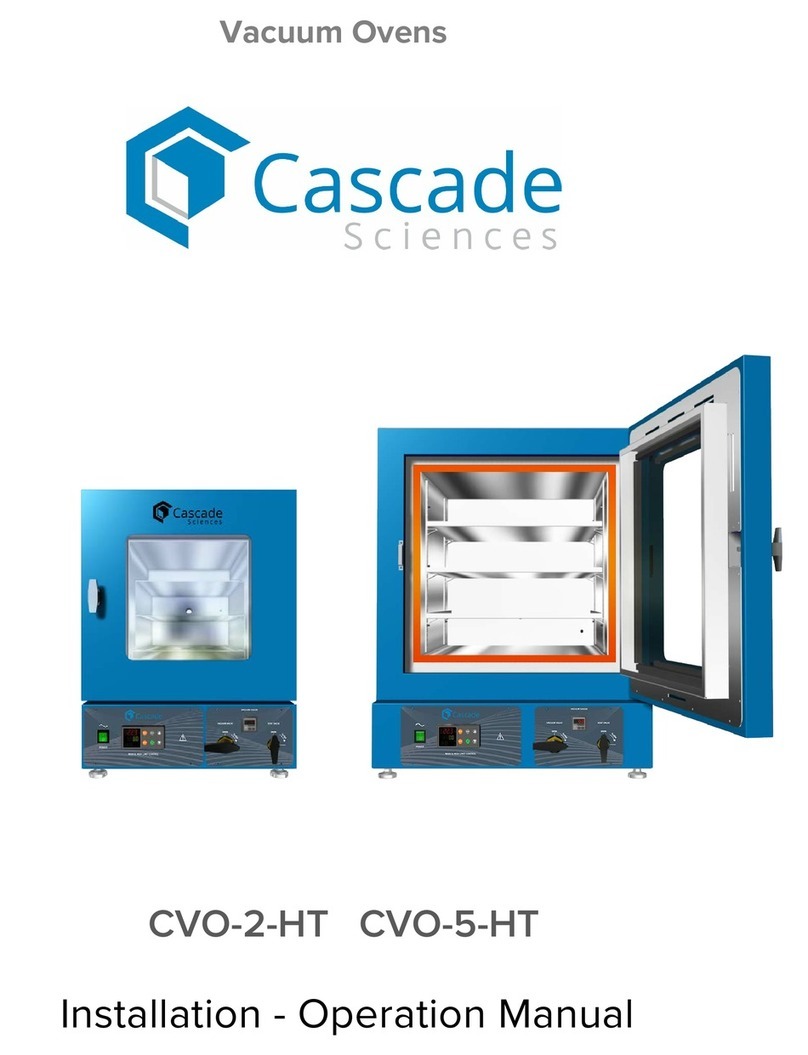
Cascade Sciences
Cascade Sciences CVO-2-HT Installation and operation manual
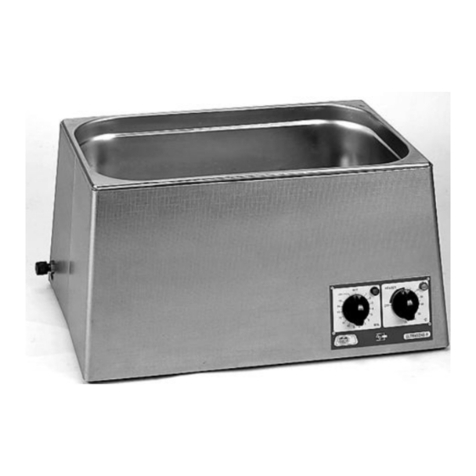
Selecta
Selecta ULTRASONS-H manual
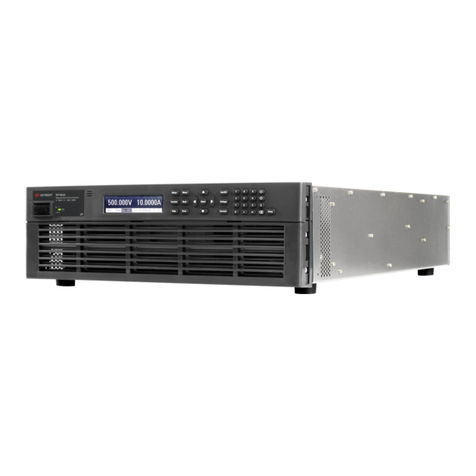
Keysight
Keysight PV8900 Series Operating and service guide

Upvel
Upvel UP-103I Quick installation guide

V&P Scientific
V&P Scientific SpinVessel VP 418SV2-2-50CB-CC operating instructions

Thermo Scientific
Thermo Scientific Antaris EX manual
